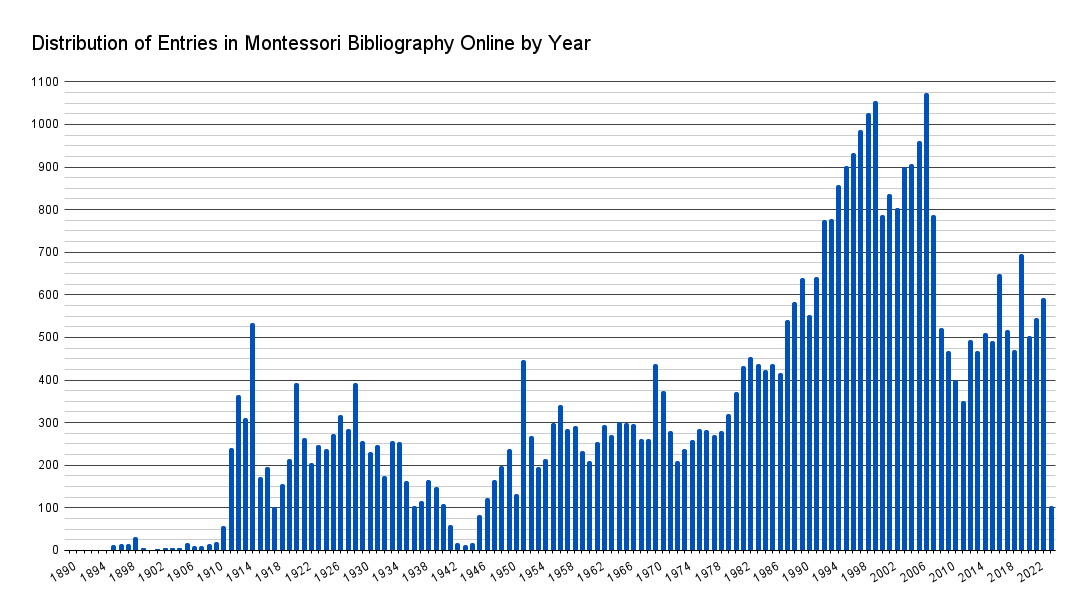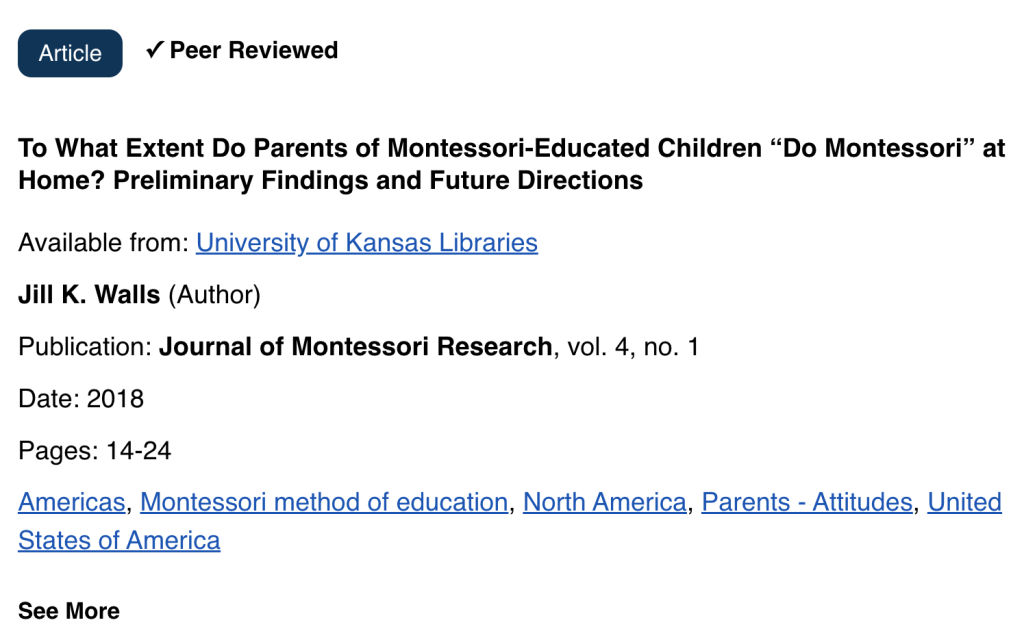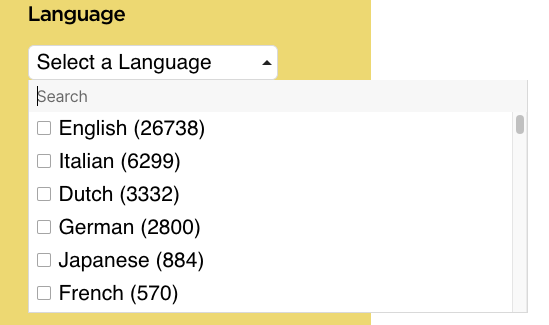I periodically do an audit of the bibliography to gain an understanding of the extent of the coverage. Generally, I focus on 5 areas and for the most part the scope of these categories are self-evident, however there are some nuances to consider.
Type of entry refers to the type of material – journal article, book, book section, et cetera – in which the citation references.
Language of content refers to the language(s) which the referenced document is written. In some cases a document may be written in one or more languages.
Year of publication is pretty self-evident, this refers to the year in which the document was published. In some cases the date of publication is unknown or unidentified so this field is left empty.
Available or unavailable in digital form refers to whether the document is accessible digitally from a reputable and reliable source. This includes content that is freely available as well as content available behind a paywall.
Finally, tagged or untagged refers to whether I have completed a basic level of cataloging of the content. As I add content to the database I attempt to assign relevant tags – this has been a challenge to maintain or sustain which is why I am soliciting collaborators.
If you are interested in collaborating on the cataloging of entries in the Bibliography, please contact me via email. Please include a brief introduction of yourself and your experience with cataloging bibliographic content or metadata management.
As of April 23, 2024 – 45,079 unique entries
Type of entry
| Type | Quantity | Percent |
|---|---|---|
| Books | 3,675 | 8.15 % |
| Book sections | 2,861 | 6.35 % |
| Journal o`r magazine articles – Peer Reviewed (more info) |
34,228 2,060 |
75.93 % ——— |
| Manuscript of archival collections | 430 | 0.95 % |
| Newspaper articles | 1,925 | 4.27 % |
| Theses or dissertations | 1,386 | 3.07 % |
| Other | 574 | 1.27 % |
Language of content
| Language | Quantity | Percent |
|---|---|---|
| Dutch | 3,332 | 7.39 % |
| English | 28,209 | 62.58 % |
| French | 585 | 1.30 % |
| German | 2,900 | 6.43 % |
| Hungarian | 298 | 0.66 % |
| Italian | 6,358 | 14.10 % |
| Japanese | 890 | 1.97 % |
| Korean | 352 | 0.78 % |
| Spanish | 568 | 1.26 % |
| Swedish | 233 | 0.52 % |
| Other | 1,461 | 3.24 % |
Year of publication

| Available | 16,879 | 37.44 % |
| Unavailable | 28,200 | 62.56 % |
| With keywords | 17,600 | 39.04 % |
| Without keyword | 27,479 | 60.96 % |



